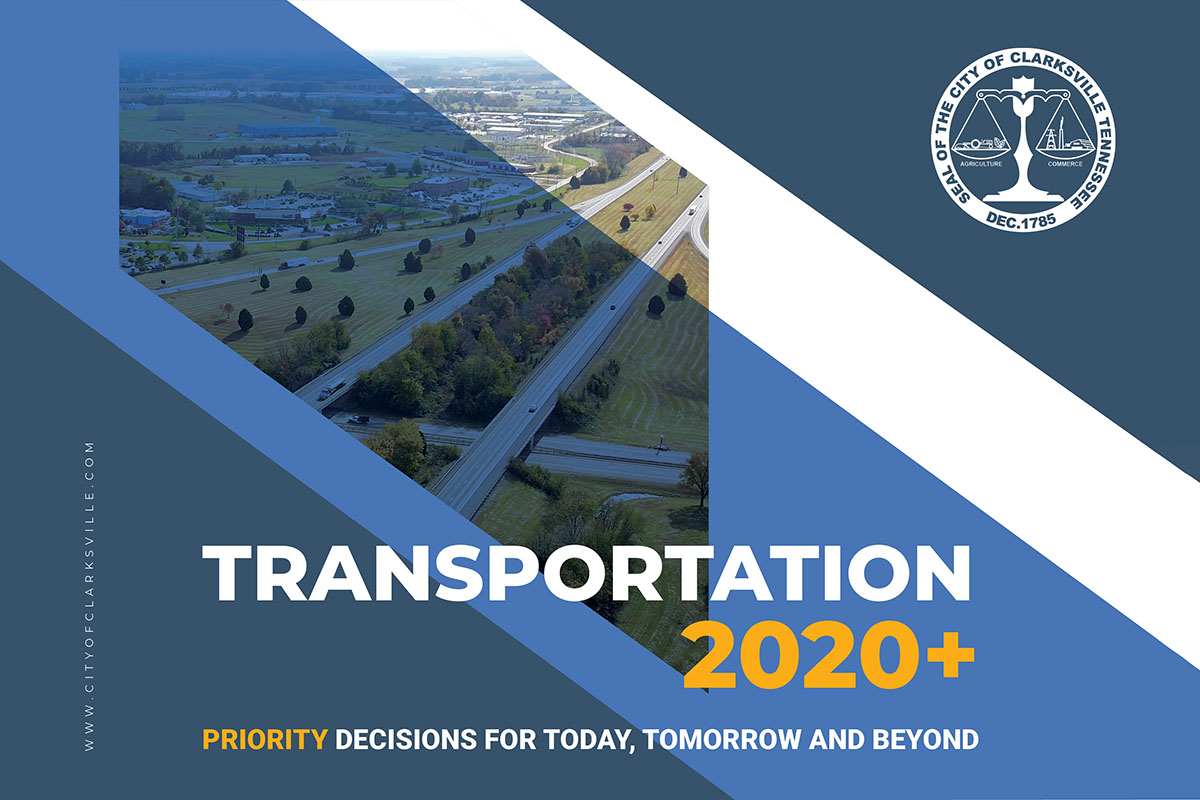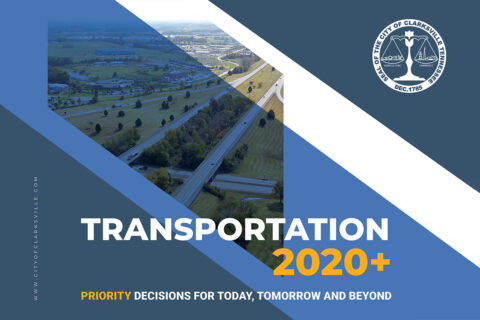 Clarksville, TN – Clarksville’s Transportation 2020+ Strategy has been met with a mostly positive reaction, with some 64 percent of citizens who responded to an online survey saying they support or might support the plan, while 36 percent said they definitely do not support it.
Clarksville, TN – Clarksville’s Transportation 2020+ Strategy has been met with a mostly positive reaction, with some 64 percent of citizens who responded to an online survey saying they support or might support the plan, while 36 percent said they definitely do not support it.
Clarksville Mayor Joe Pitts last month presented a summary of the plan to the City Council, and invited citizens to take a hard look at the document and offer their thoughts.
Overall, the 2020 Transportation Strategy is designed to guide transportation decisions over the next 20 years within the fiscal constraints of the City’s budget and limited state and federal funding opportunities. Its purpose is to identify and confront current traffic and mobility challenges while actively planning for those on the horizon.
The Strategy prioritizes transportation projects into three tiers based on need, the projects’ ability to solve the City’s most pressing traffic and mobility problems, and the best allocation of City resources to implement transportation priorities throughout the City.
The Strategy also estimates the costs associated with priority improvements and outlines options to fund the plan’s goals. The total cost of all the projects listed in the document is $462 million. Tier 1 projects — those already underway or determined to be the most needed — total some $178 million.
To read the full strategy, view maps, learn more, and share your reaction on the online survey go to: www.cityofclarksville.com/1043/Transportation-2020
Here is a summary of frequently asked questions gleaned from 36 online responses so far from residents. Answers are provided by the Communications Office, based on the actual report and more information supplied by City Departments involved in shaping the Transportation 2020+ Strategy.
Question: What is the timeframe covered by the report?
Answer: The study period is 2020 to 2040, when the Clarksville area population is expected to swell by 40 percent, or an additional 90,455 new residents, yielding a total population of 298,919. The reality is that Clarksville’s road network and transportation infrastructure must be expanded and improved because of this expected increased volume on area roadways.
Q. When would projects start, and how long will it take to complete all the work?
A. The plan is divided into three tiers, based on priority needs, and designed to guide work over the next 20 years. Some of the major Tier 1 projects are already underway, such as planning for the Spring Creek Parkway, the Whitfield Road-Needmore Road project near Glenellen Elementary School, and the Tylertown Road-Oakland Road project. Other projects in Tier 1 are clearly identified, but require funding commitments by the City Council before preliminary design can begin.
[470cetner]
Mayor Pitts also has stressed that the Strategy is flexible and can change based on input by the City Council and residents. Because of funding limitations, it is envisioned that the Strategy will unfold sequentially over the next two decades, with the most important and critical improvements coming first, and others emerging over time.
Q. Aren’t the total expenditures — $462 million — envisioned in the plan simply unrealistic?
A. It is a huge amount of money, but it is a well-researched projection of just how much funding will be needed over the next two decades to improve Clarksville’s transportation network and prevent gridlock, ensure mobility options and provide safe roads. It also is an indication of just how dramatic the City’s growth has been, how far behind we are, and how much is needed to keep pace with the true needs of the transportation system. No one is suggesting these projects will be done all at once, and the spending will be managed over decades, not in a lump sum.
Q. Tax and revenue questions: Why does the City need new revenue to fix its roads and traffic problems? Can roads be built with something other than tax dollars? Why should taxpayers be expected to pay for roads, isn’t that a City responsibility?
A. In general, local government is funded by the taxpayers, for the taxpayers’ benefit. This is how a municipal government pays for roads, police and fire departments, public parks and recreation facilities, and so forth.
Right now, Clarksville’s property tax rate is $1.0296 per $100.00 of assessed value, much lower than several comparable cities, such as Chattanooga at $2.277, Knoxville at $2.4638, and Murfreesboro at $1.2894. The City of Clarksville gets to keep a portion of the sales taxes collected in the City, the balance of which is directed to the State and the local school system. Overall, the City’s General Fund — the portion used to pay for roads, public safety, parks and recreation, and debt service — totals about $108 million per year.
Tennessee Law provides for property tax relief for low-income elderly and disabled homeowners, as well as disabled veteran homeowners or their surviving spouses. Tax collecting officials, including the Montgomery County Trustee and the City Revenue Office, receive applications from taxpayers who may qualify. Information is available online here.
Clarksville’s rapid growth over the past four decades exerts pressure on all parts of the General Fund. More businesses and more people create the need for more police officers and police facilities, more firefighters, fire facilities and equipment, more parks and recreation facilities and programs — and more roads and transportation infrastructure.
After accounting for all the other needs, only a portion of the City’s general revenue is available in any given year to build and improve the roads. That portion provides only enough annual debt service to enable borrowing about $40 million for road projects. Without new revenues dedicated to transportation projects, the City simply doesn’t have enough money available to overcome its pressing near and long-term transportation needs.




